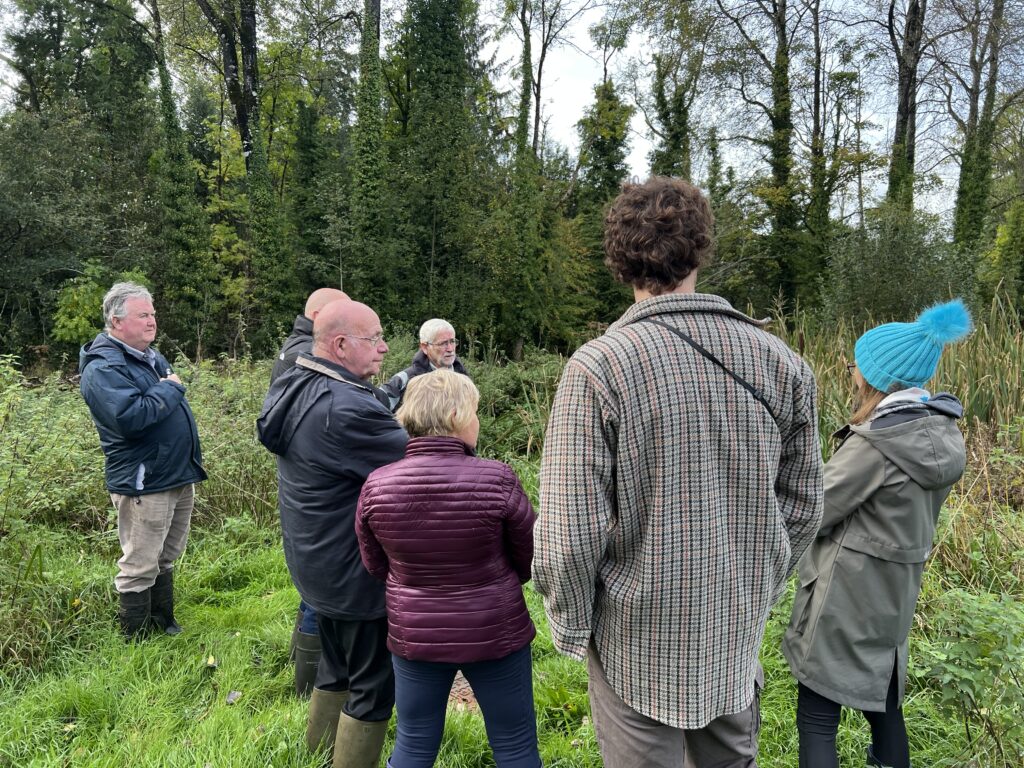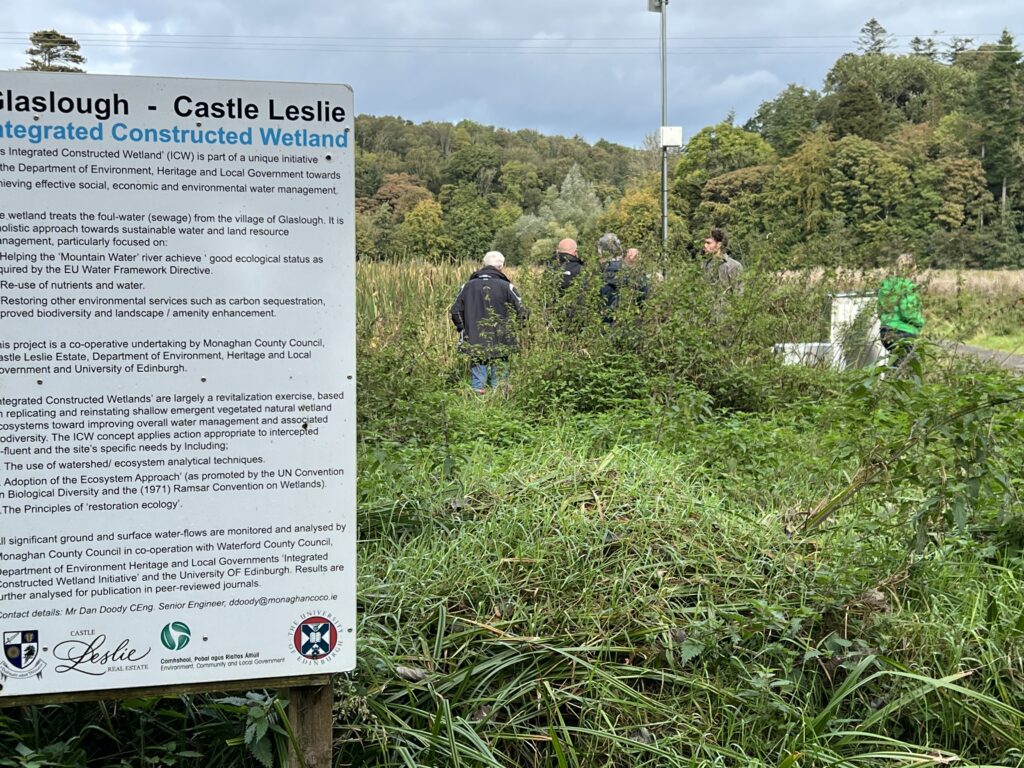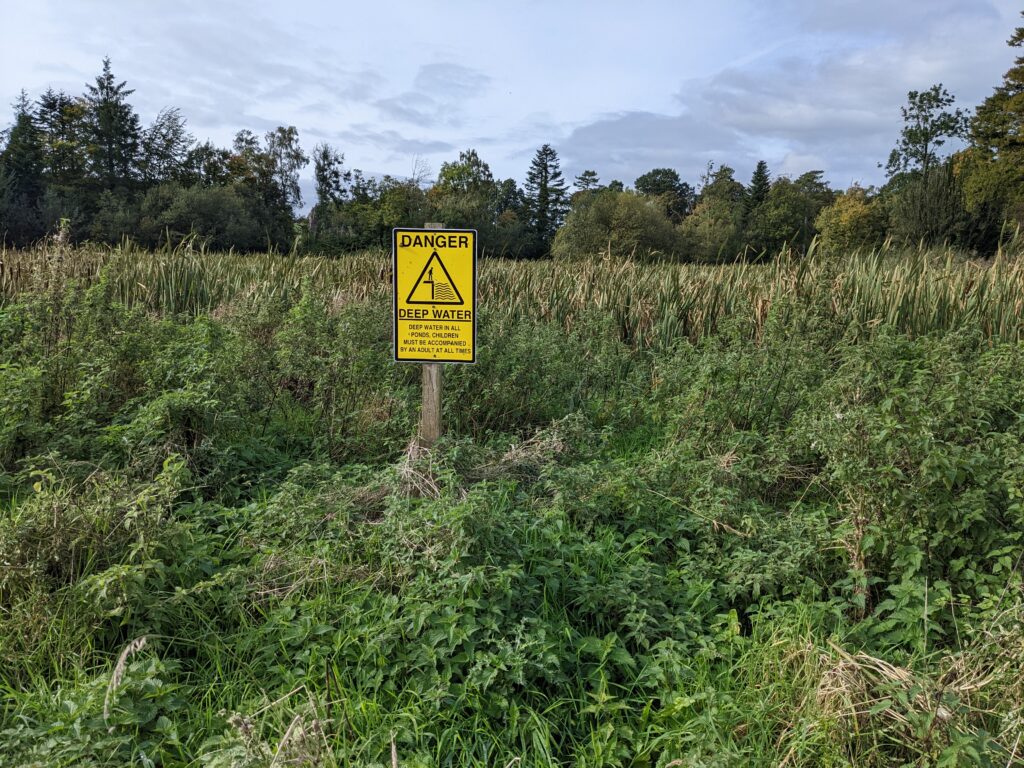Emy Lough
On Saturday 8th October 2022 we sampled the shallows of Emy Lough in the morning.
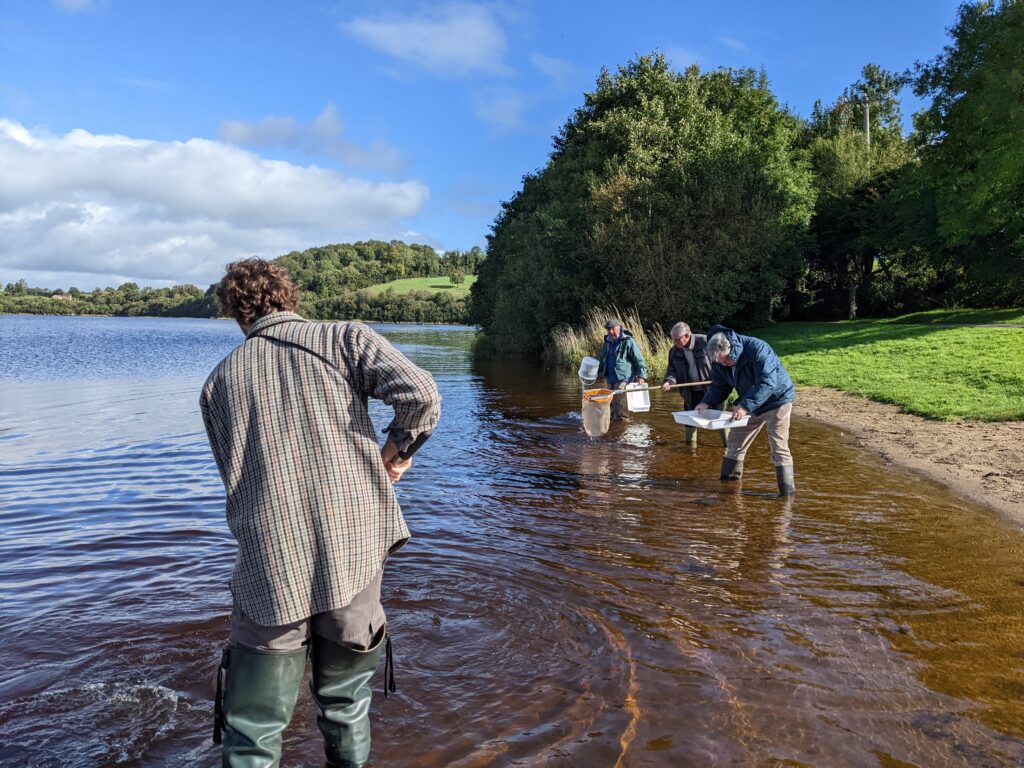
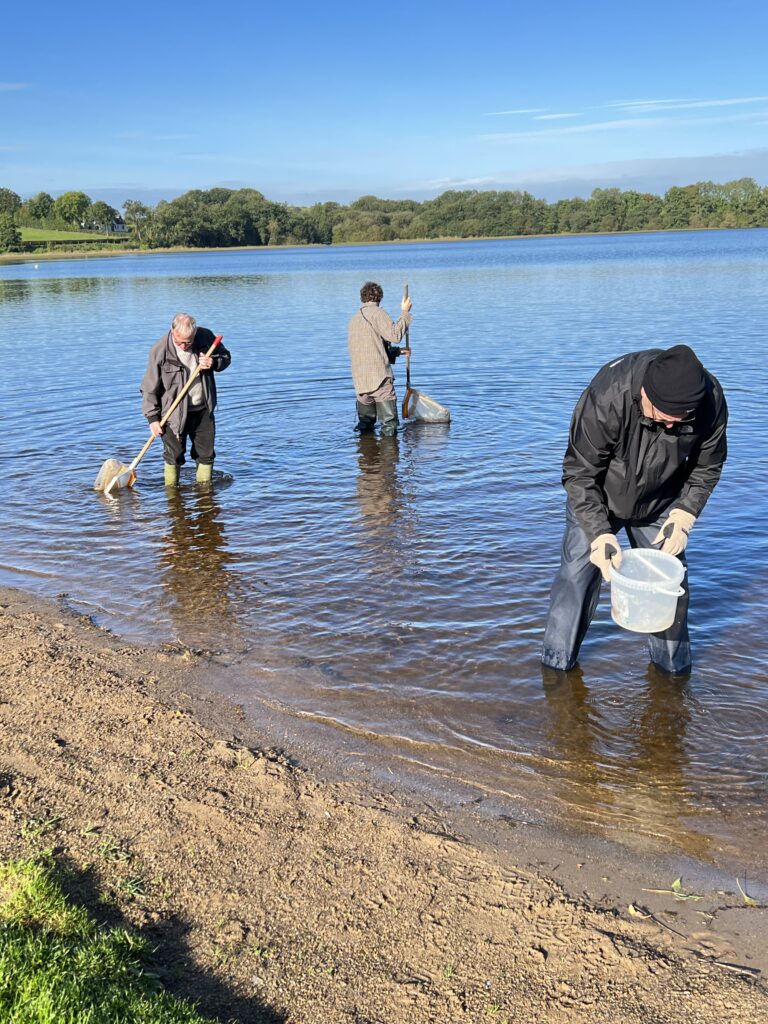
We came across a good range of invertebrates. Shrimps (Gammarus) were very plentiful, and we recorded a small number of water louse (Asellus) plus some leeches and water boatmen (Corixidae). There were lots of a small mayfly, Caenis, in the samples which is also called “the anglers curse”. Ken explained that this name is due to their mass hatching that makes the anglers’ flies redundant as the fish gorge on these emerging mayflies.
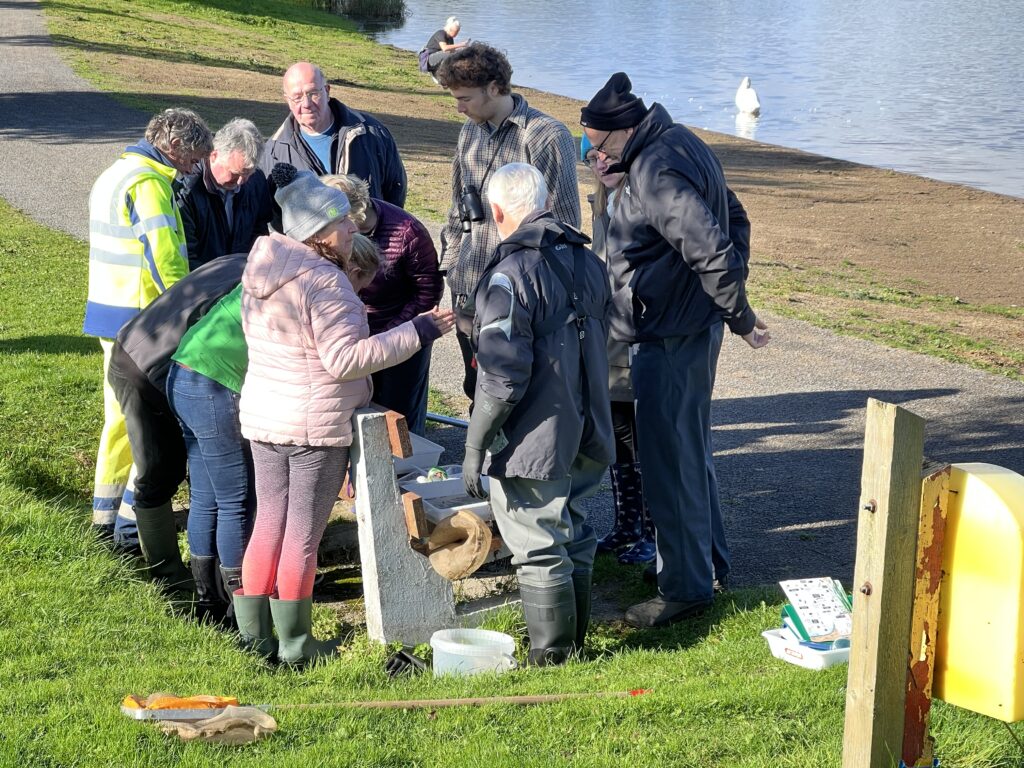
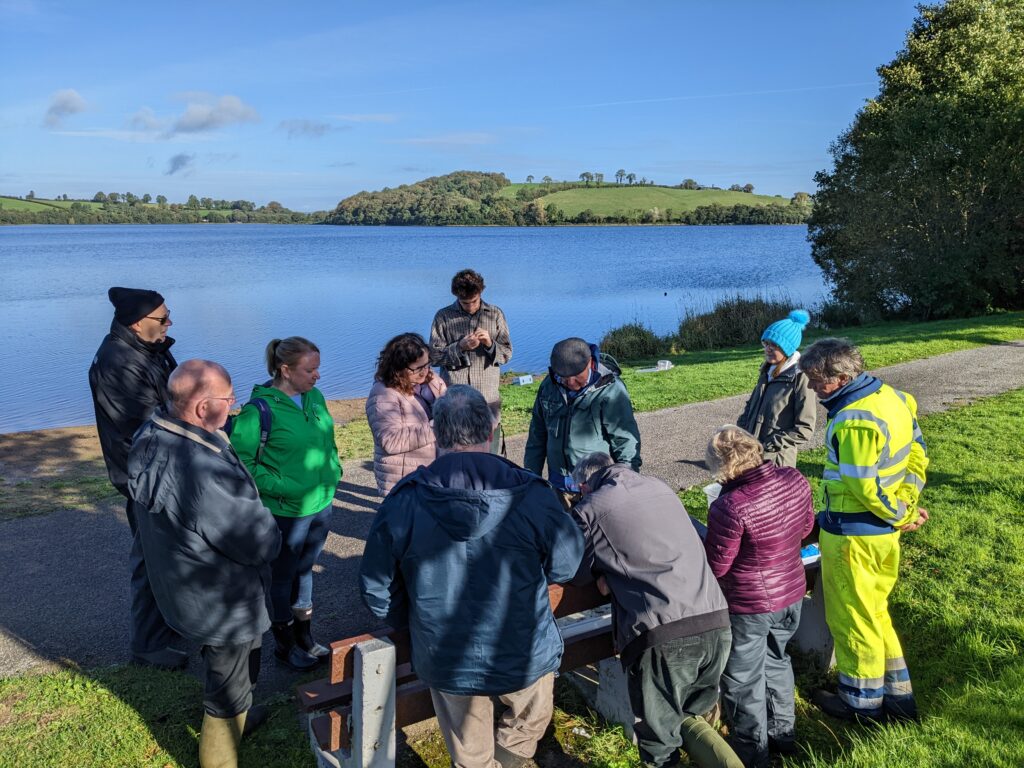
The most unusual specimen found was the fish louse, Argulus, which is believed to infect the rainbow trout population in the lake.
The EPA has classified Emy Lough as being of “Moderate” ecological status and the samples we took reflected this assessment.
Fish
Ken discussed the main fish species in Ireland – his favourite salmon of course but also trout, pike, rudd, roach and eels. He gave a detailed account of fish life cycles outlining different strategies – those that spawn in freshwater with young fish then going to sea to feed such as salmon and sea trout. Many species of course spend their full life cycle in freshwater while the eel spawns in the Saragossa Sea and return to Ireland where they may live in freshwater for up to 50 years before returning to spawn.

The Plants
We also noted the different plant types including a stand of the very ancient ‘living fossil’ horsetail emerging from the water. This plant (Equisetum) looks like the all too common garden weed – but see below – it has its uses! We noted stands of the common canary reed grass (Phalaris) as well as the branched bur-reed (Sparganium erectum) identified by the obvious twist at the end of its leaves.

Dissolved Oxygen

We measured the levels of oxygen dissolved in the lake water and explained the concept of percentage saturation. Water holds more oxygen when it is cold and less is dissolved in water at higher temperatures. For any given temperature there is an ideal 100% saturation point – see the graph above.
Oxygen is critical for both fish and invertebrates – their gills extract oxygen from the water.
We explained that our national standards form dissolved oxygen have two thresholds – 80% and 120%. If saturation falls below 80% or goes above 120% a water body will fail on its oxygenation condition.
The reason for the 120% threshold is that values above 100% indicate that plants are photosynthesising and pumping out oxygen that dissolves in the water – but only during daylight hours. At night plants continue to respire and use oxygen. If there is sufficient plant biomass to push daytime concentrations above 120% it is likely that night-time concentrations will fall below 80% and cause distress to fish and macroinvertebrates.
On the day we measured 9.04 mg/l dissolved oxygen at 13.4°C giving 86.1% saturation.
The Integrated Constructed Wetland at Glaslough
In the afternoon we visited the Integrated constructed wetland treatment system at Castle Leslie in the beautiful village of Glaslough. This system filters waste water from the village (currently ~500 inhabitants) through five vegetated ponds sequentially before final discharge to the Mountain Water.
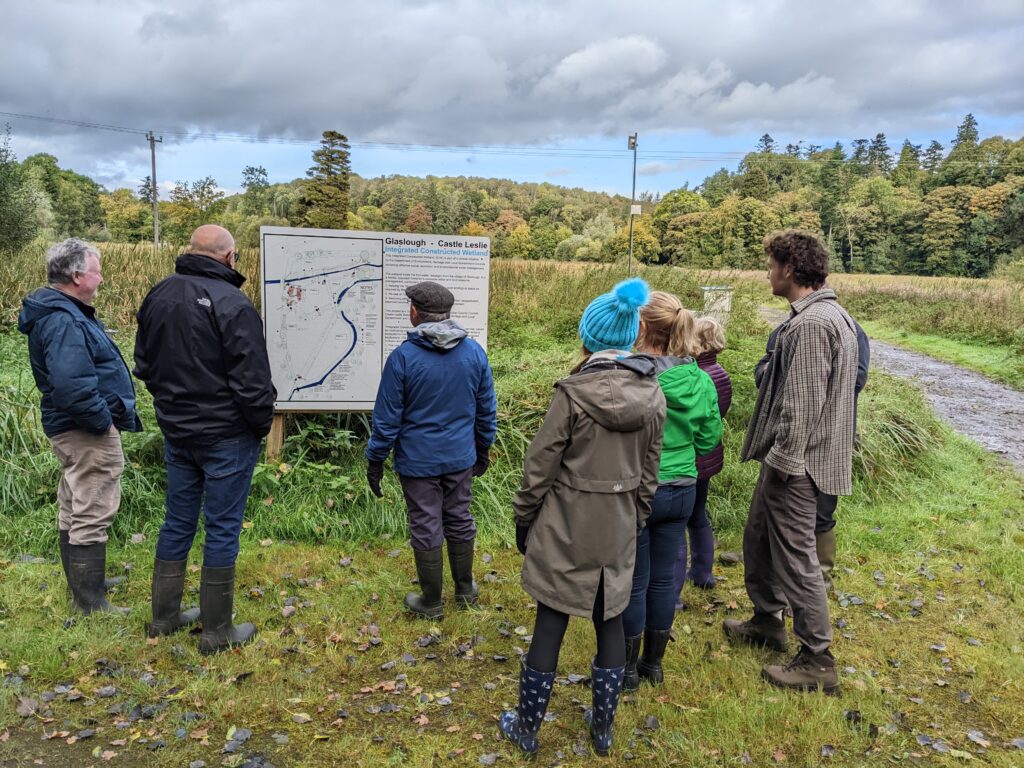
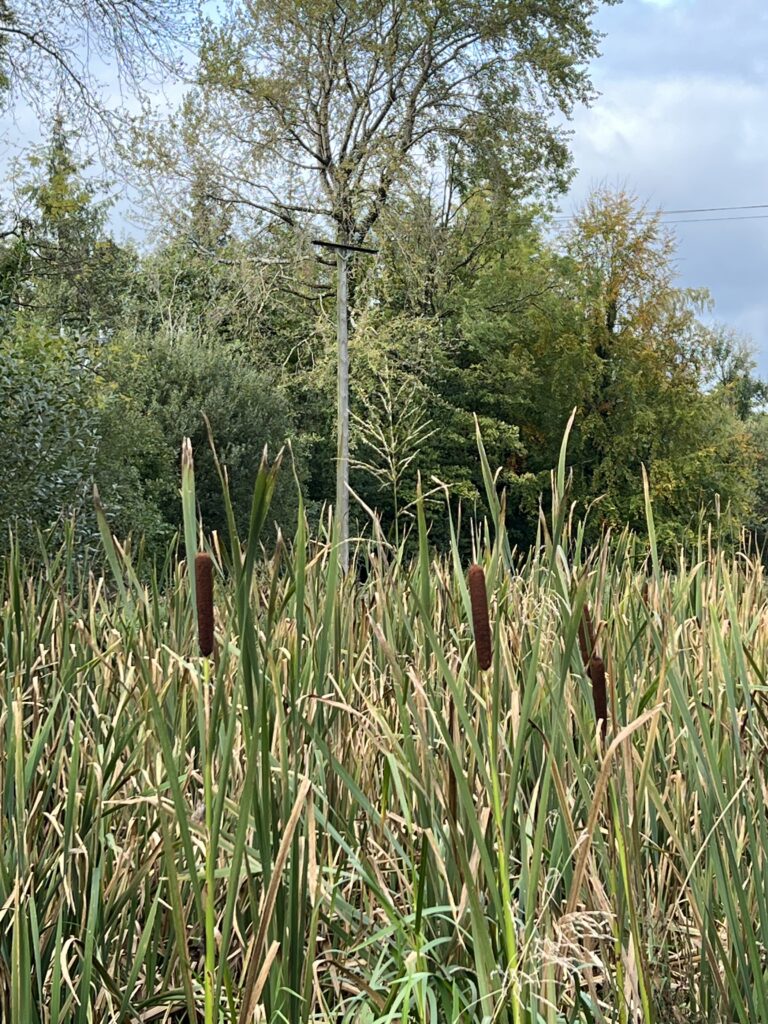
The ponds have an area of 3.2 ha on a 6.7 ha site within the grounds of Castle Leslie. The system is designed to treat loads from up to 1800 people. The ponds have plants such as bulrushes and reeds planted one per square metre.
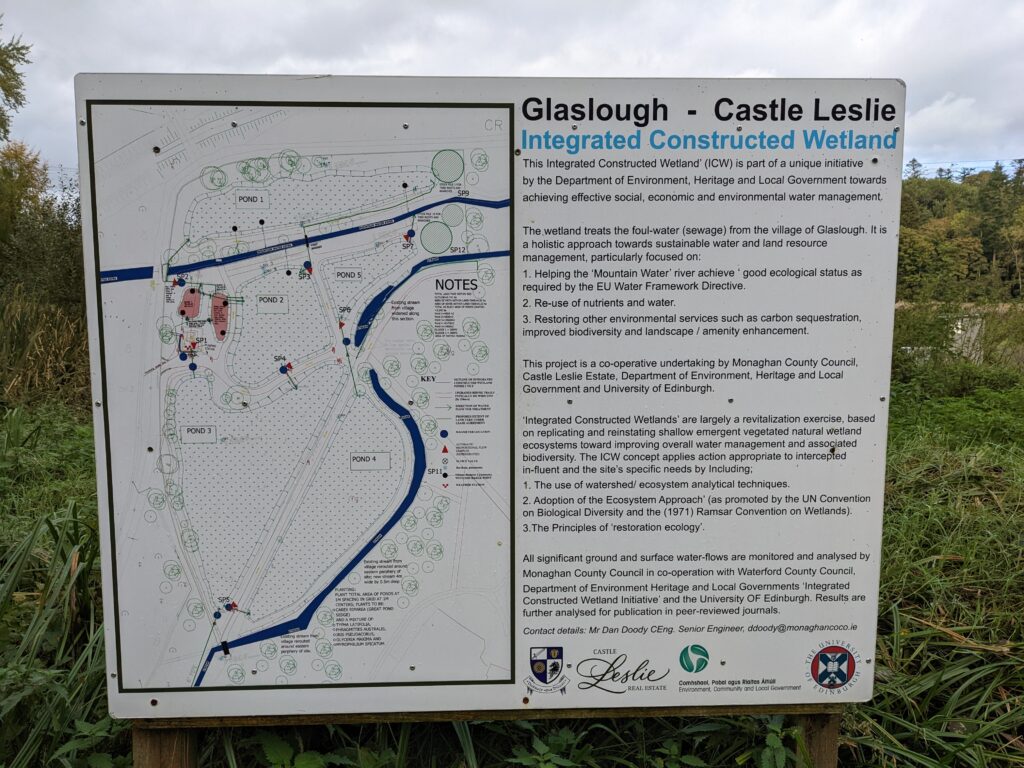
The aim is to treat the sewage in successive ponds such that the final effluent is clear with reduced phosphorus and nitrogen concentrations. The treatment system achieves a 99% reduction of biochemical oxygen demand (BOD). Unfortunately, however, the 2020 Annual Environmental Report for Glaslough indicates that the treatment system fails to achieve the ammonia and phosphate target concentrations of 1 and 0.5 mg/l, respectively with annual mean discharge concentrations three times and twice the target concentrations for ammonia and phosphate, respectively. Annual Environmental Reports for towns with a population of 500 or greater are available to view on the EPA’s website.
All in all it was a very interesting visit to Castle Leslie.
